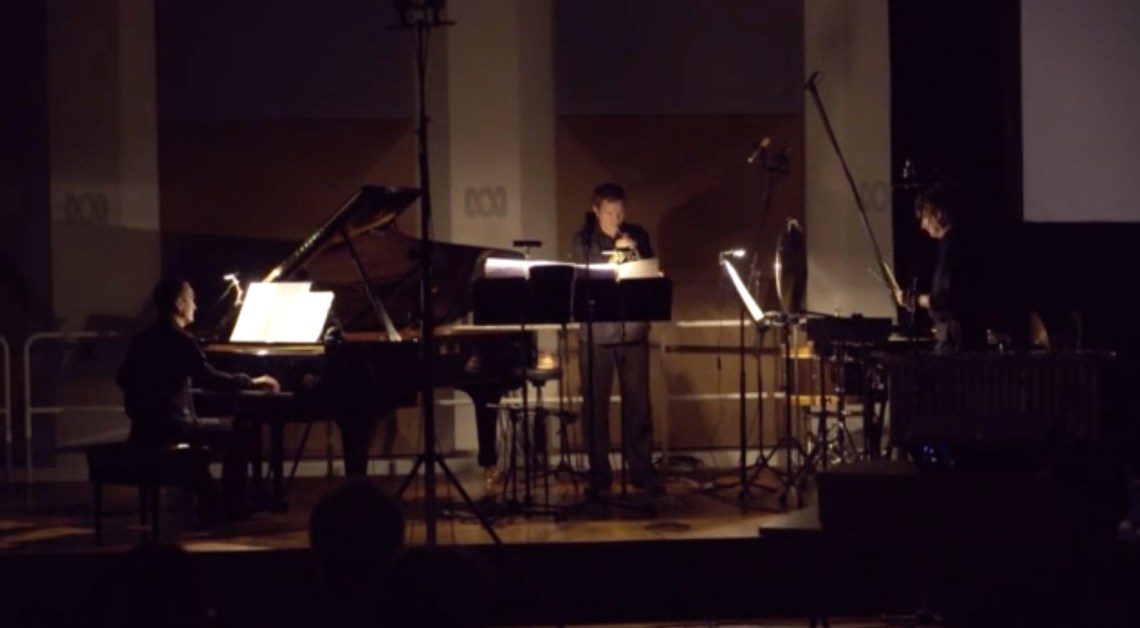Where are the Sounds of Joy?
for trumpet, percussion, piano (2015)
(Trumpet (Bb) [notated at pitch in the score] (harmon mute, plunger [wow-wow]); 1 Percussionist; (Filipino kulintang, crotales, vibraphone, hi-hat cymbals, tam-tam cymbal [low], Peking Opera gong [high], 2 bongos [high, medium], 2 tom-toms [medium, low], bass drum; strikers: medium mallets, soft mallets, wire brush, percussion bow or double bass bow); Piano); duration: 10′ 00″; publisher: Australian Music Centre


score available from AMC
program note
Where are the Sounds of Joy? takes its inspiration from Australian Gallipoli warrior, Billy Sing, and re-envisages his life through Kunqu—the mother form of Chinese opera, specifically the Peony Pavilion with its fragile transitory image of imagining beauty amidst the broken. It reimagines the Gallipoli war from the Chinese perspective with the metaphor from Kunqu in Peony Pavilion, of a broken down garden as the site for dreaming of the ideal lover, used as a parallel of Gallipoli as broken down walls from which one dreams of escape. The work opens and closes with half-sung, half-breath sounds on trumpet alongside emergent ‘broken’ prepared-sounds on piano, and Mandarin whisperings, whilst pure percussion colours focus to war-like Peking opera gong bursts. Restless energy starts to emerge with insistent repeated-note rhythms, whose notes fragment the Christian “Dies Irae” plainchant. These hidden fragments mix with others, such as the Turkish Kalenderi scale (related to the wandering dervishes) and makam Saba as whirling, arching quick-note bursts in the texture; they work together with explosive improvisatory generated piano licks, extended Peking Opera accelerando figures, and Filipino kulintang gong-chime repeated-note insistence as Qi-like energy. The trans-morphed gestures all push towards a chaotic cacophonic climax. A gentle section emerges centering the work with a subdued trumpet plunger tune, related to Kunqu melodic fragments; it sits amidst rich piano resonances, including silent-string evoked half-sounds, and eerie bowed crotales as an imagined dreaming of love. The music returns to short bursts of the cacophonic section, before being subdued by the recapitulation of the opening half-voiced sounds on piano and trumpet, and crotale tremolo. The work ends amidst half-resonances on piano and Mandarin whisperings—“shui jia yuan?” over the lingering Kunqu dream harmony.
Where are the Sounds of Joy (oil; water colour), Luping Zeng, ©July 2015
Performance note: Tristram Williams (trumpet), Peter Neville (percussion) and Michael Kieran Harvey (piano) with a short film by Iqbal Barkat and Vincent Tay (Filigree Films) with images by Luping Zeng (artist) at the Melbourne Composers League-ABC Classic FM ‘Where are the Sounds of Joy’ concert, Iwaki Auditorium on 26 September 2015.
articles
available on the writings pages
See story of the music and film on the writings page, Garden of Breath for the Renewal of Love—Gallipoli Response
recording
See album Living Colours: Pacific Sounds & Spirit, Navona 2017; Spotify 2017


